Abstract
Immunoconglutinin and electrophoretically altered forms of complement are detectable only after the fall in complement levels in acute nephritis, and may occur even when the fall is not noted. The delay between the postulated initiating streptococcal infection and the development of immunoconglutinin is longer than would be expected. The immunopathological significance of these findings is discussed.
Full text
PDF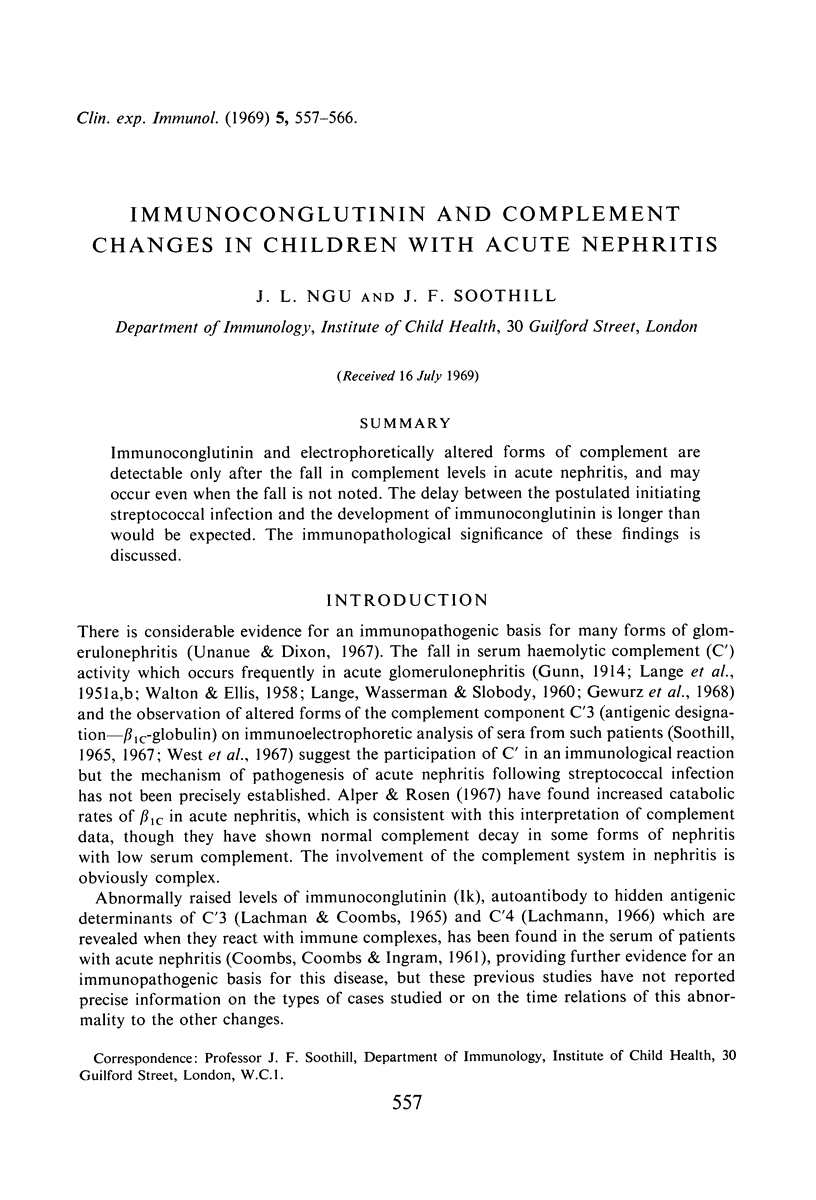
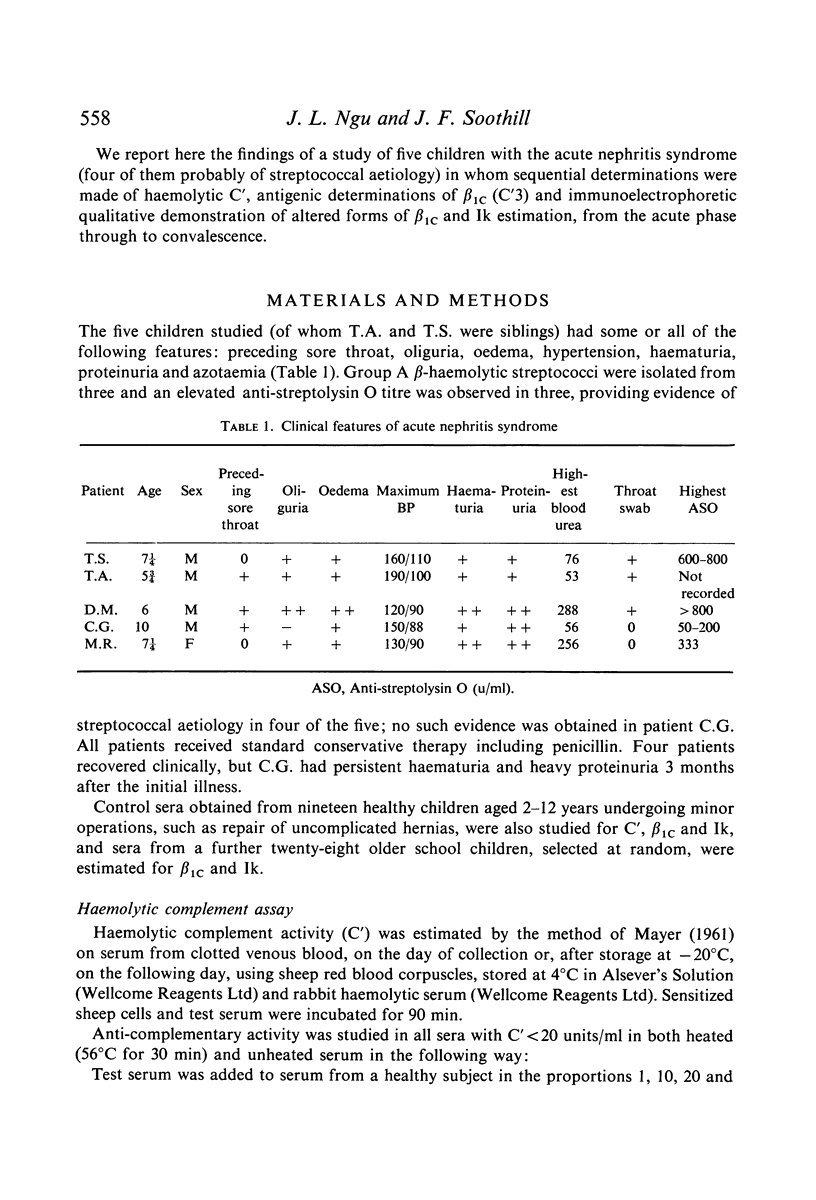
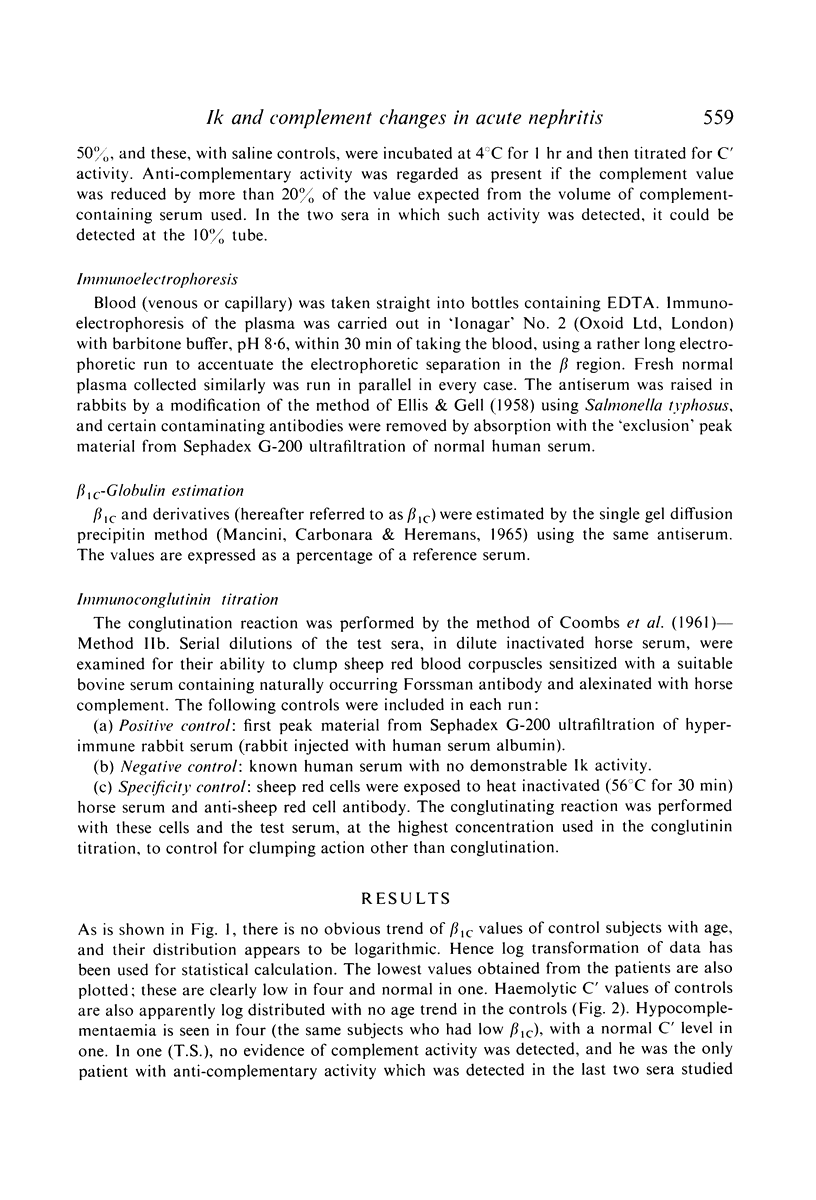
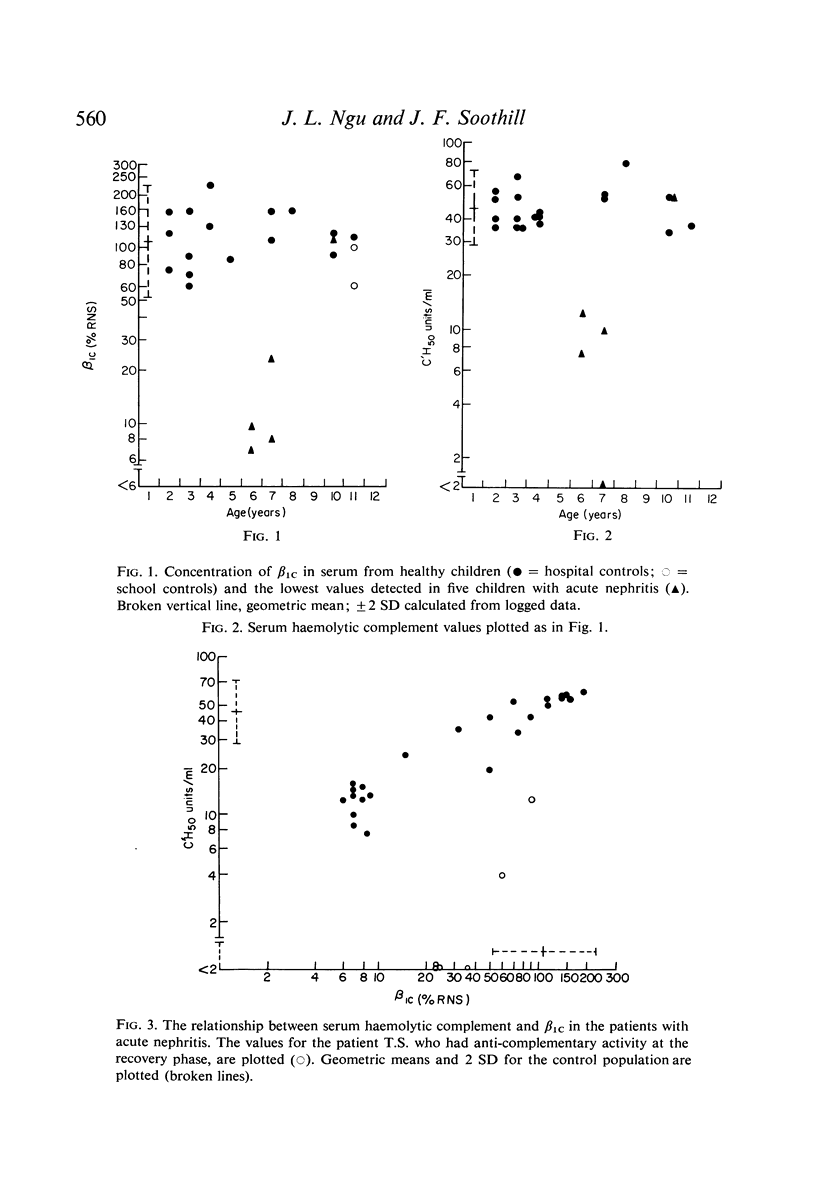
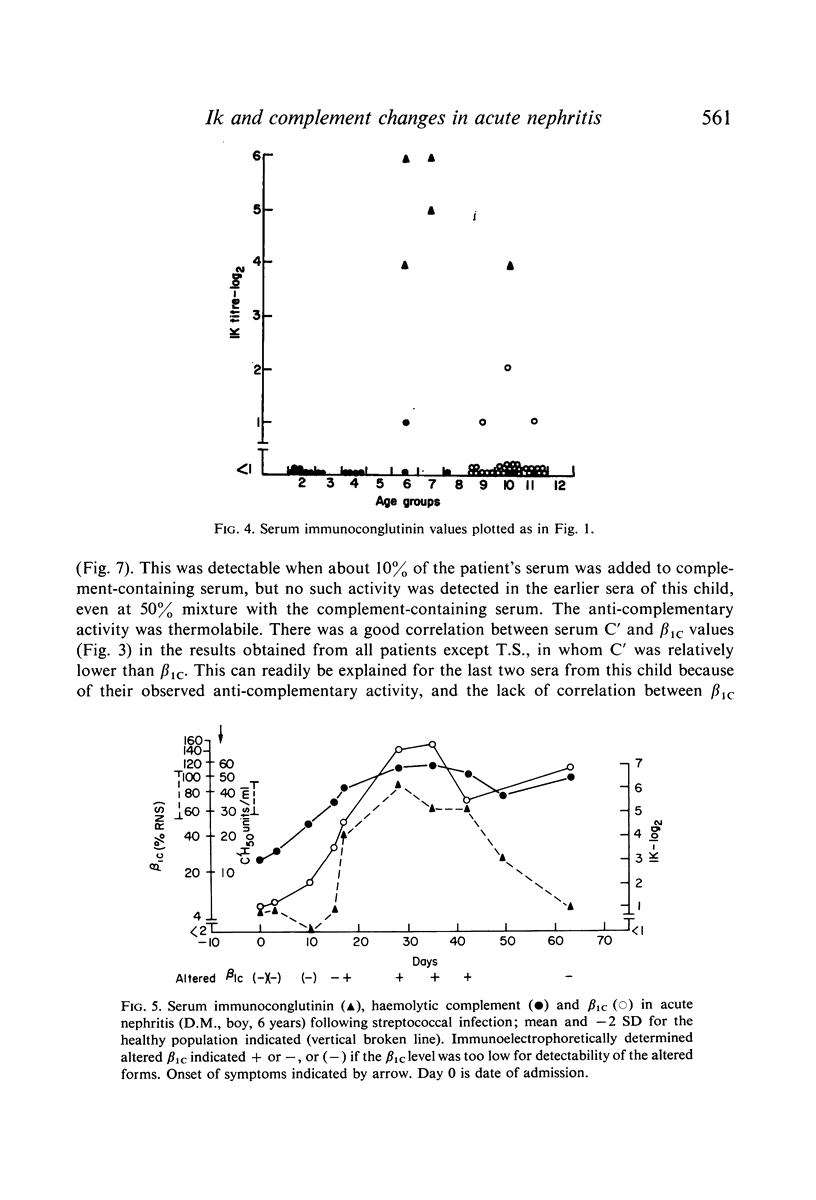
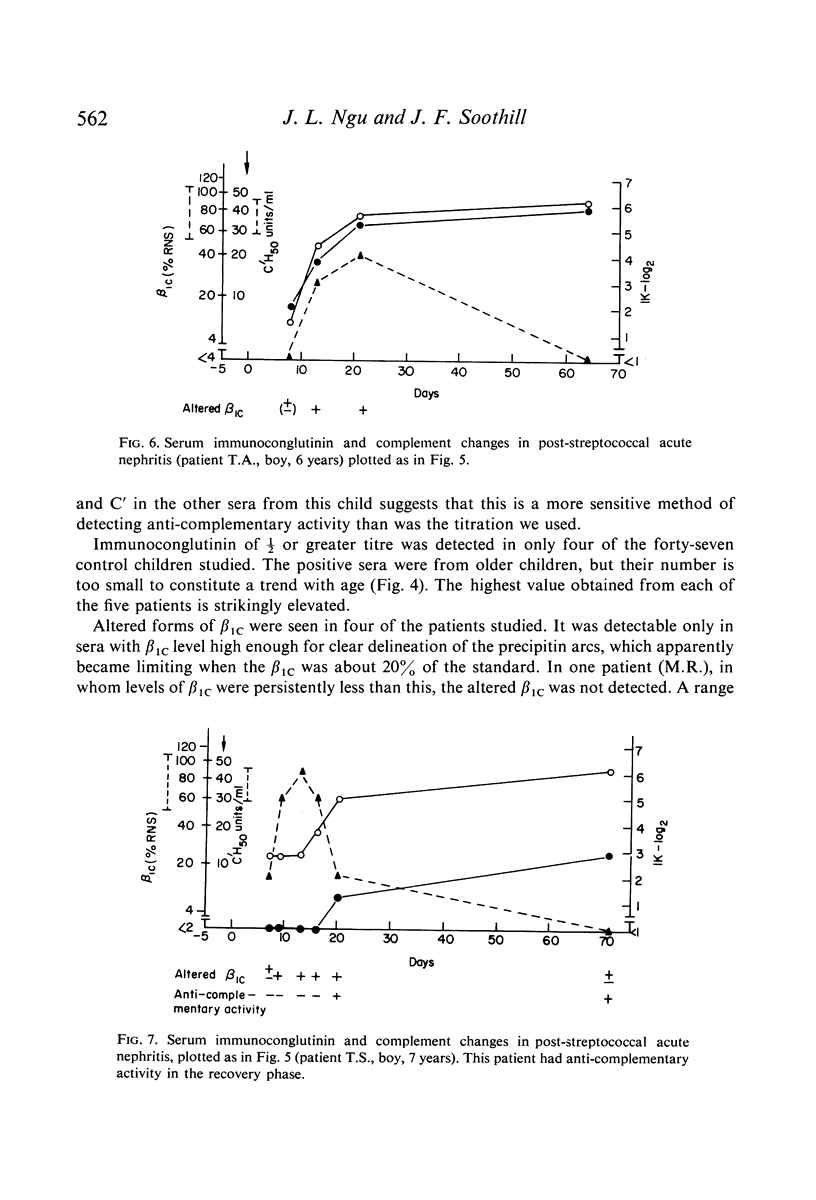
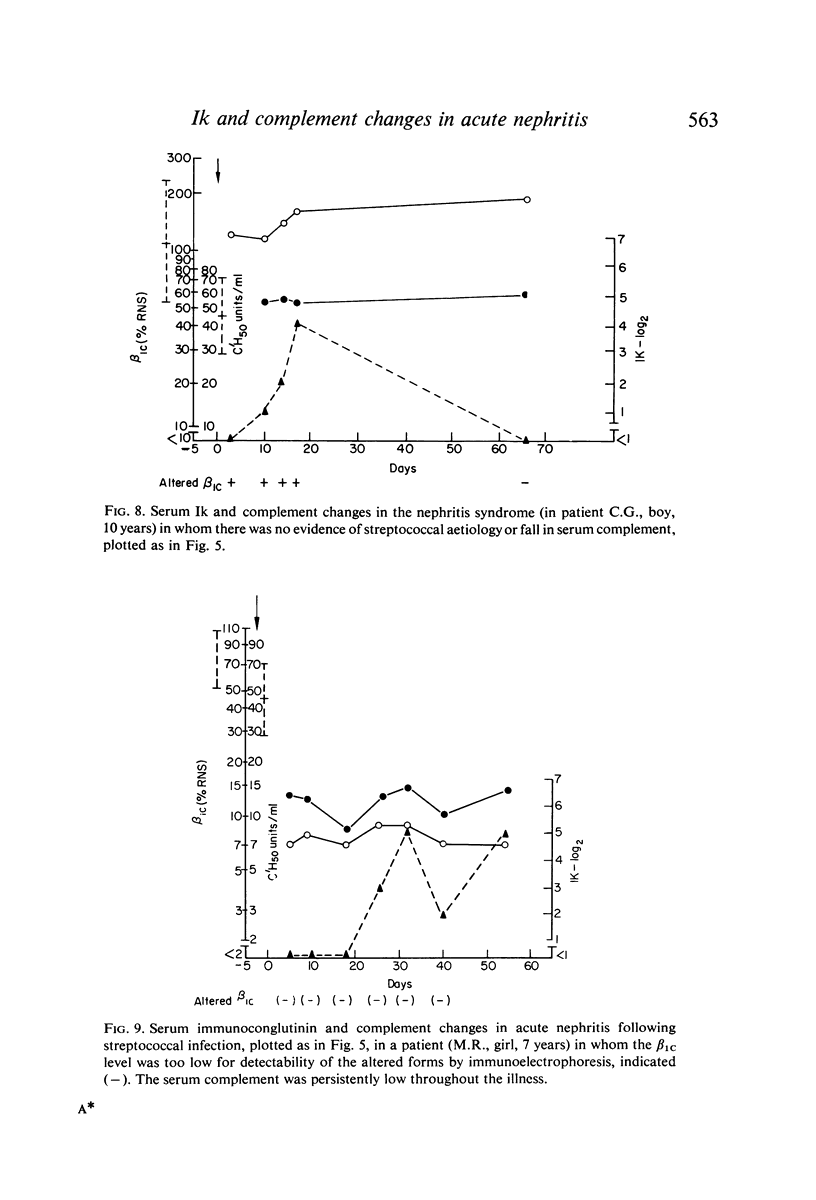
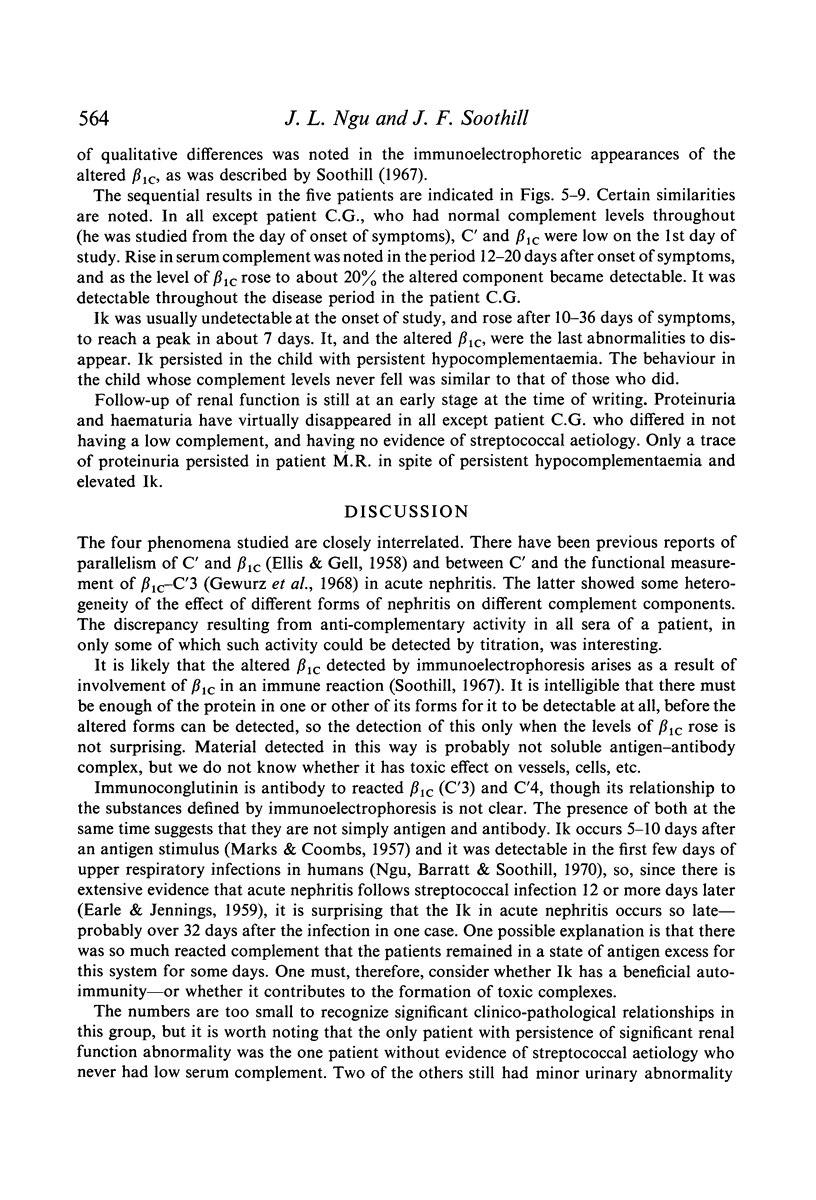
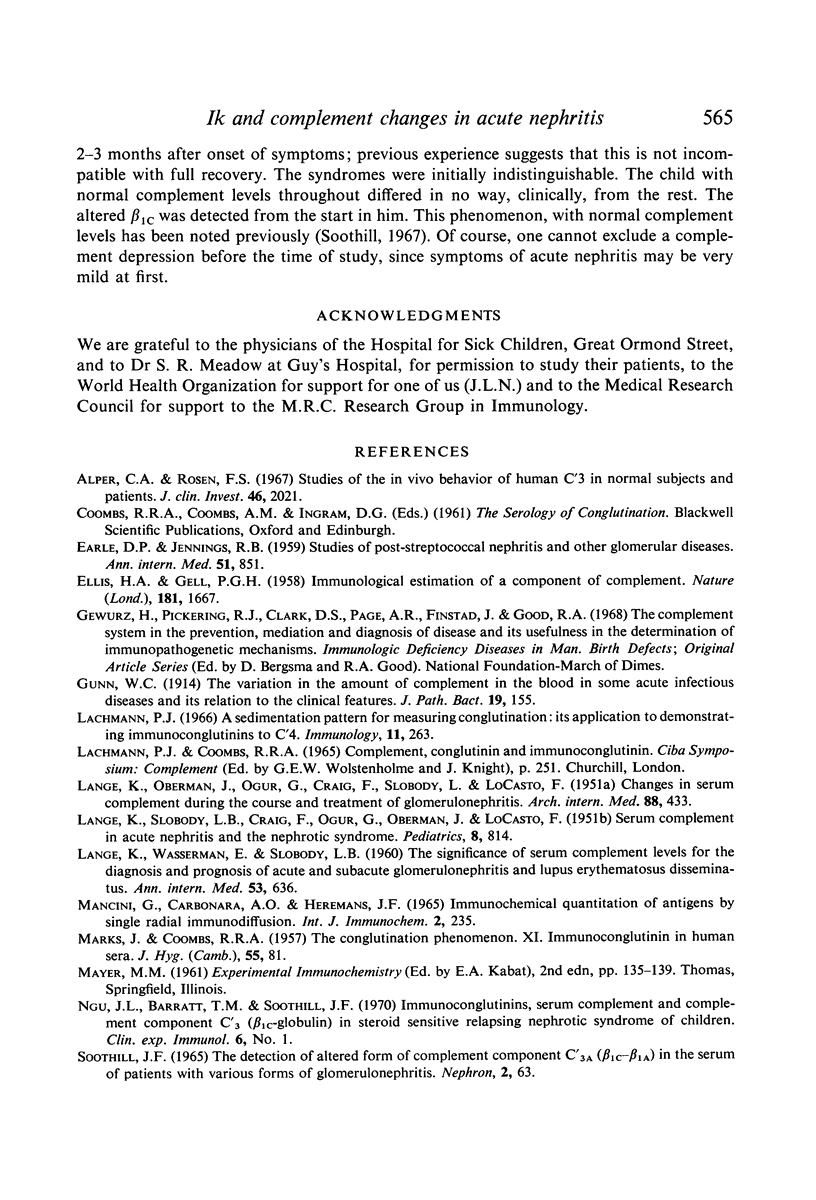
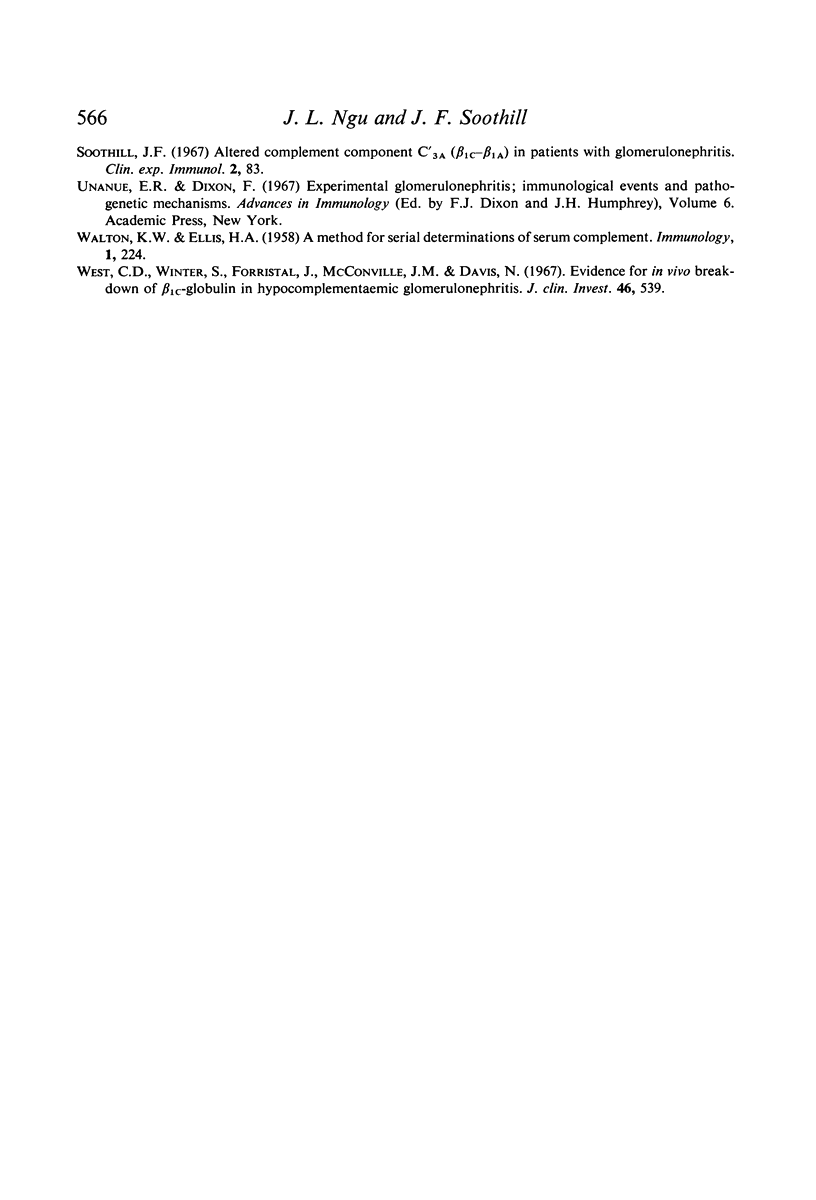
Selected References
These references are in PubMed. This may not be the complete list of references from this article.
- Alper C. A., Rosen F. S. Alper CA, Rosen FS: Studies of the in vivo behavior of human C'3 in normal subjects and patients. J Clin Invest. 1967 Dec;46(12):2021–2034. doi: 10.1172/JCI105691. [DOI] [PMC free article] [PubMed] [Google Scholar]
- EARLE D. P., JENNINGS R. B. Studies of poststreptococcal nephritis and other glomerular diseases. Ann Intern Med. 1959 Nov;51:851–860. doi: 10.7326/0003-4819-51-5-851. [DOI] [PubMed] [Google Scholar]
- ELLIS H. A., GELL P. G. Immunological estimation of a component of complement. Nature. 1958 Jun 14;181(4624):1667–1668. doi: 10.1038/1811667a0. [DOI] [PubMed] [Google Scholar]
- LANGE K., GRAIG F., OBERMAN J., SLOBODY L., OGUR G., LoCASTO F. Changes in serum complement during the course and treatment of glomerulonephritis. AMA Arch Intern Med. 1951 Oct;88(4):433–445. doi: 10.1001/archinte.1951.03810100017002. [DOI] [PubMed] [Google Scholar]
- LANGE K., SLOBODY L., GRAIG F., OGUR G., OBERMAN J., LoCASTO F. Serum complement in acute glomerulonephritis and the nephrotic syndrome. Pediatrics. 1951 Dec;8(6):814–819. [PubMed] [Google Scholar]
- LANGE K., WASSERMAN E., SLOBODY L. B. The significance of serum complement levels for the diagnosis and prognosis of acute and subacute glomerulonephritis and lupus erythematosus disseminatus. Ann Intern Med. 1960 Oct;53:636–646. doi: 10.7326/0003-4819-53-4-636. [DOI] [PubMed] [Google Scholar]
- Lachmann P. J. A sedimentation pattern technique for measuring conglutination: its application to demonstrating immunoconglutinins to C'4. Immunology. 1966 Sep;11(3):263–271. [PMC free article] [PubMed] [Google Scholar]
- MARKS J., COOMBS R. R. The conglutination phenomenon. XI. Immunoconglutinin in human sera. J Hyg (Lond) 1957 Mar;55(1):81–90. doi: 10.1017/s0022172400061271. [DOI] [PMC free article] [PubMed] [Google Scholar]
- Mancini G., Carbonara A. O., Heremans J. F. Immunochemical quantitation of antigens by single radial immunodiffusion. Immunochemistry. 1965 Sep;2(3):235–254. doi: 10.1016/0019-2791(65)90004-2. [DOI] [PubMed] [Google Scholar]
- Soothill J. F. Altered complement component C3A (beta-1C--beta-1A) in patients with glomerulonephritis. Clin Exp Immunol. 1967 Jan;2(1):83–92. [PMC free article] [PubMed] [Google Scholar]
- WALTON K. W., ELLIS H. A. A method for serial determinations of serum complement. Immunology. 1958 Jul;1(3):224–233. [PMC free article] [PubMed] [Google Scholar]
- West C. D., Winter S., Forristal J., McConville J. M., Davis N. C. Evidence for in vivo breakdown of beta-10-globulin in hypocomplementemic glomerulonephritis. J Clin Invest. 1967 Apr;46(4):539–548. doi: 10.1172/JCI105555. [DOI] [PMC free article] [PubMed] [Google Scholar]


